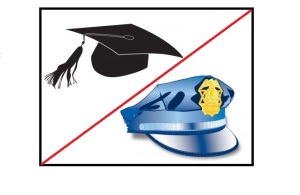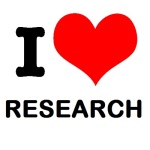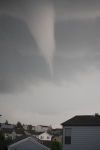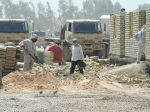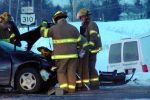Getting the Most Out of Academic-Industry Collaborations
“The real world” versus “the ivory tower.” “Town” versus “gown.” “Applied” research versus “pure.” There are a lot of names for the gap between the academic researchers in a discipline and the practitioners who work in the field, and almost all of them reflect the distrust and even animosity that can exist between these two groups.
As many fields move toward “evidence-based” practice in one form or another, however, both sides are making increasing attempts to narrow that gap. One of the most effective methods is to build collaborations between researchers and practitioners—but even with the best of intentions, mismatched objectives, unclear expectations, and a host of other problems lead most of these collaborations to fall short of their goals. In some cases, they actually widen the breach.
Fortunately, recent studies of such collaborations indicate that there are a few ways to help increase the likelihood of their success—and reduce the chances that your carefully-developed research partnership will devolve into a screaming match over intellectual property, applications of the findings, or the order of the authors’ names on the final report.
Why Collaborate?
Given the inherent philosophical and cultural differences between university researchers and field practitioners, what reasons are there for attempting to build collaborations in the first place?
Very briefly, there are at least two: theory testing and research uptake.
Theory testing is a benefit primarily for the researchers. While it is certainly possible to develop viable, logical, and relevant theories using data alone, proper interpretation of that data often requires practical experience from the field.
For example, if you were studying the importance of officer communication in barricaded suspect situations, you could develop useful theories and new communicative approaches just by listening to recordings of officer interactions. Without the input of officers themselves, however, your interpretation of those interactions could be skewed. What the researcher hears as an interruption, the officer might point out was actually just a technical problem—the second officer’s radio didn’t pick up the first officer’s message. Without the field context, in other words, many theories cannot be fully validated.
On the other side, research uptake is a benefit primarily for practitioners in the field. Research uptake refers to the extent to which practitioners actually use—bring into their daily work—new ideas and understandings developed by researchers. This is an area that lags in almost every field, from management to medicine, with one medical researcher finding that it takes as much as 17 years for new practices to be adopted by doctors and surgeons.
If practitioners want to improve what they do and to make use of the most up-to-date knowledge about their field, they must be informed about that new knowledge and its benefits to themselves and those they serve. Research collaborations have been shown to improve this kind of research uptake significantly.
How to Make it Work
Although our understanding of what really goes on within any individual research collaboration is necessarily limited, a number of recent studies have shown that there are a few things researchers and practitioners can do to make their collaborations successful.
1—Set Clear Expectations
Perhaps the most important thing to do before the collaboration gets underway is to clearly outline what each side wants from the experience. One study, for example, found that while researchers are most interested in getting published papers, practitioners were most interested in seeing physical or organizational changes (new technologies, better management structures, etc.). In other words, academics tend to see the research as an end in itself, while practitioners want to go a step further and see the results implemented or applied in some way.
Understanding what each side wants or needs, and setting specific goals to achieve at least some of everyone’s expectations, can help guide the collaboration to success and head off the inevitable arguments that will result if one side is seen to be benefiting at the expense of the other.
2—Be Explicit About Value
Collaborations sometimes end in fights and even lawsuits, but more often they simply wane. Busy schedules, unclear goals, and competing projects all contribute to this. The antidote to this kind of slow death by neglect is to explicitly set out, in terms that matter to all the parties involved, the value of the project and the value of each participant.
Consider the example of the study to improve officer communications at high-intensity crime scenes. What is the value of the project overall—and what is its value for each of the stakeholders involved? Clearly, improved officer communication could lead to improved officer safety and more efficient scene operations: that’s the value for the officers. These improvements could in turn lead to better outcomes for victims and, potentially, higher apprehension rates or lower property damage costs: that’s a value not only for officers but for the community. Furthermore, this research could lead to a better overall understanding of communication problems in high-stakes, high-emotion situations: a benefit for the communication researchers.
In addition to this high-level value description, also make sure you lay out the value of each participant. Otherwise, each group may begin to feel that they don’t need the others and can go back to working alone. In our example, the researchers should be given a brief introduction to the work the officers do, their experiential understanding of their own communications practices, and what they can bring to the data collection and analysis portion of the research. On the flip side, officers should be trained on the background of the research, the potential benefits to themselves, and the already-existing studies that show how improved communication can improve officer safety.
3—Build Goal-Oriented Teams
One of the main reasons many researcher-practitioner collaborations fail is that their make-up is ambiguous, shifting, or too broad.
Imagine a researcher wanted a better understanding of the effects of shift work on employee sleep cycles. In many cases, the researcher contacts an agency and gains approval to do the research. Then what? Who is in charge? Does the researcher work directly with the employees, or through a supervisor? Will the researcher have one point of contact in the agency, or will she simply deal with whoever is there when she shows up—even if that person has never been informed about the research in the first place?
The better approach is for one or more researchers to establish a research team, including one or more supervisory personnel and one or more line-level personnel. This team will decide on the expectations together, inform other personnel about the research and its purpose, and conduct the study. All communications about the research will go through this team, and decisions will be made by them, jointly. If this central team can be kept to five or six persons, all the better.
Build Your Own
Of course we can only scratch the surface of researcher-practitioner collaborations here. The key point is this: research benefits from practitioner involvement, practice benefits from research—and both benefit when “the ivory tower” and “the real world” meet in the middle. So reach out and make a research connection today!

